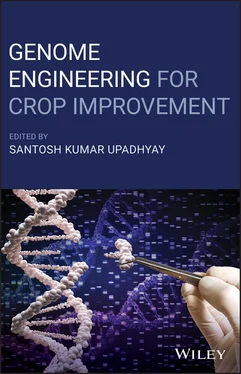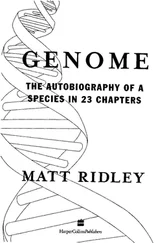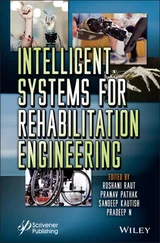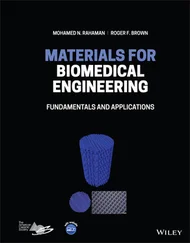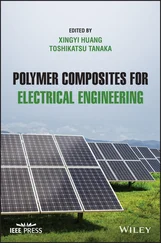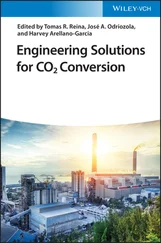98 Scheben, A., Wolter, F., Batley, J. et al. (2017). Towards CRISPR/Cas crops–bringing together and genome editing. New Phytology 216: 682–698.
99 Scherf, K.A., Koehler, P., and Wieser, H. (2016). Gluten and wheat sensitivities an overview. Journal of Cereal Science 67: 2–11.
100 Schmutz, J., Cannon, S.B., Schlueter, J. et al. (2010). Genome sequence of the palaeopolyploid soybean. Nature 463: 178–183.
101 Schnable, P.S., Ware, D., Fulton, R.S. et al. (2009). The B73 maize genome: complexity, diversity, and dynamics. Science 326: 1112–1115.
102 Schubert, D. and Williams, D. (2006). Cisgenic; as a product designation. Nature Biotechnology 24: 1327.
103 Sestili, F., Janni, M., Doherty, A. et al. (2010). Increasing the amylose content of durum wheat through silencing of the SBEIIagenes. BMC Plant Biology 10: 144.
104 Shan, Q., Wang, Y., Li, J., and Gao, C. (2014). Genome editing in rice and wheat using the CRISPR/Cas system. Nature Protocols 9: 2395–2410.
105 Shan, Q., Wang, Y., Li, J., and Gao, C. (2014). Genome editing in rice and wheat using the CRISPR/Cas system. Nature Protocols 9: 2395.
106 Shen, L., Li, J., Fu, Y. et al. (2017). Orientation improvement of grain length and grain number in rice by using CRISPR/Cas9 system. Chinese Journal of Rice Science 31: 223–231.
107 Shewry, P.R. and Halford, N.G. (2002). Cereal seed storage proteins: structures, properties and role in grain utilization. Journal of Experimental Botany 53: 947–958.
108 Shi, J., Gao, H., Wang, H. et al. (2017). ARGOS8 variants generated by CRISPR–Cas9 improve maize grain yield under field drought stress conditions. Plant Biotechnology Journal 15: 207–216.
109 Shu, Q.Y., Forster, B., and Nakagawa, H. (2012). Principles and Applications of Plant Mutation Breeding, in Plant Mutation Breeding and Biotechnology (eds. Q.Y. Shu, B. Forster and H. Nakagawa), 301–326. Wallingford: CABI.
110 Si, L., Chen, J., Huang, X. et al. (2016). OsSPL13 controls grain size in cultivated rice. Nature Genetics 48: 447–456.
111 Sikora, P., Chawade, A., Larsson, M. et al. (2011). Mutagenesis as a tool in plant genetics, functional genomics, and breeding. International Journal of Plant Genomics 2011: 314829.
112 Smidansky, E.D., Meyer, F.D., Blakeslee, B. et al. (2007). Expression of a modified ADP‐glucose pyrophosphorylase large subunit in wheat seeds stimulates photosynthesis and carbon metabolism. Planta 225: 965–976.
113 Splitter, J. (2019). The Latest Gene‐Edited Food Is a Soybean Oil that Comes with Zero Trans Fats. New York: Forbes.
114 Stemmer, M., Thumberger, T., Del Sol Keyer, M. et al. (2015). CCTop: an intuitive, flexible and reliable CRISPR/Cas9 target prediction tool. PLoS One 10: e0124633.
115 Stewart, C.N., Adang, M.J., All, J.N. et al. (1996). Genetic transformation, recovery, and characterization of fertile soybean transgenic for a synthetic bacillus thuringiensiscryIAc gene. Plant Physiology 112: 121–129.
116 Sui, X., Zhao, Y., Wang, S. et al. (2012). Improvement Fe content of wheat (Triticum aestivum) grain by soybean ferritin expression cassette without vector backbone sequence. Journal of Agriculture and Biotechnology 20: 766–773.
117 Sundström, J.F., Albihn, A., Boqvist, S. et al. (2014). Future threats to agricultural food production posed by environmental degradation, climate change, and animal and plant diseases–a risk analysis in three economic and climate settings. Food Security 6: 201–215.
118 Suo, J., Liang, X., Pu, L. et al. (2003). Identification of GhMYB109 encoding a R2R3 MYB transcription factor that expressed specifically in fiber initials and elongating fibers of cotton (Gossypium hirsutum L.). Biochimtry and Biophysics Acta 1630: 25–34.
119 Tan, J., Tu, L., Deng, F. et al. (2012). Exogenous jasmonic acid inhibits cotton fiber elongation. Journal of Plant Growth Regulation 31: 599–605.
120 Tang, F., Yang, S., Liu, J., and Zhu, H. (2016). Rj4, a gene controlling nodulation specificity in soybeans, encodes a thaumatin‐like protein but not the one previously reported. Plant Physiology 170: 26–32.
121 Terada, R., Nakajima, M., Isshiki, M. et al. (2000). Antisense waxy genes with highly active promoters effectively suppress waxy gene expression in transgenic rice. Plant Cell Physiology 41: 881–888.
122 United Nations, Department of Economic and Social Affairs, Population Division (2017). The Impact of Population Momentum on Future Population Growth. Population Facts. https://www.un.org/en/development/desa/population/publications/factsheets/index.shtml(accessed 17 July 2020.
123 Upadhyay, S.K., Kumar, J., Alok, A., and Tuli, R. (2013). RNA‐guided genome editing for target gene mutations in wheat. G3: Genes, Genomes, Genetics 3: 2233–2238.
124 Waltz, E. (2018). With a free pass, CRISPR‐edited plants reach market in record time. Nature Biotechnology 36: 6–7.
125 Wang, S., Li, S., Liu, Q. et al. (2015). The OsSPL16‐GW7 regulatory module determines grain shape and simultaneously improves rice yield and grain quality. Nature Genetics 47: 949–954.
126 Wang, W., Pan, Q., He, F. et al. (2018). Transgenerational CRISPR‐Cas9 activity facilitates multiplex gene editing in allopolyploid wheat. The CRISPR Journal 1: 65–74.
127 Wang, W., Simmonds, J., Pan, Q. et al. (2018). Gene editing and mutagenesis reveal inter‐cultivar differences and additivity in the contribution of TaGW2homoeologues to grain size and weight in wheat. Theoretical and Applied Genetics 131: 2463–2475.
128 Watanabe, S., Hideshima, R., Xia, Z. et al. (2009). Map‐based cloning of the gene associated with the soybean maturity locus E3. Genetics 182: 1251–1262.
129 Weichert, N., Saalbach, I., Weichert, H. et al. (2010). Increasing sucrose uptake capacity of wheat grains stimulates storage protein synthesis. Plant Physiology 152: 698–710.
130 Welch, R.M. and Graham, R.D. (1999). A new paradigm for world agriculture: meeting human needs. Productive, sustainable, nutritious. Field Crops Research 60: 1–10.
131 Wendel, J.F. and Cronn, R.C. (2003). Polyploidy and the evolutionary history of cotton. Advancement in Agronomy 78: 139–186.
132 Wenefrida, I., Utomo, H.S., Blanche, S.B., and Linscombe, S.D. (2009). Enhancing essential amino acids and health benefit components in grain crops for improved nutritional values. Recent Advances in DNA and Gene Sequences 3: 219–225.
133 Xiao, Y.H., Li, D.M., Yin, M.H. et al. (2010). Gibberellin 20‐oxidase promotes initiation and elongation of cotton fibers by regulating gibberellin synthesis. Journal of Plant Physiology 167: 829–837.
134 Xu, W.L., Zhang, D.J., Wu, Y.F. et al. (2013). Cotton PRP5 gene encoding a proline‐rich protein is involved in fiber development. Plant Molecular Biology 82: 353–365.
135 Yang, Z., Zhang, C., Yang, X. et al. (2014). PAG1, a cotton brassinosteroid catabolism gene, modulates fiber elongation. New Phytologist 203: 437–448.
136 Ye, X., Al‐Babili, S., Klöti, A. et al. (2000). Engineering the provitaminA (β‐carotene) biosynthetic pathway into (carotenoid‐free) rice endosperm. Science 287: 303–305.
137 Zhang, F., Liu, X., Zuo, K. et al. (2011). Molecular cloning and characterization of a novel Gossypium barbadense L. RAD‐like gene. Plant Molecular Biology Reporter 29: 324–333.
138 Zhang, G., Cheng, Z., Zhang, X. et al. (2011). Double repression of soluble starch synthase genes SSIIa and SSIIIa in rice (Oryza sativa L.) uncovers interactive effects on the physicochemical properties of starch. Genome 54: 448–459.
139 Zhang, T., Hu, Y., Jiang, W. et al. (2015). Sequencing of allotetraploid cotton (Gossypium hirsutum L. acc. TM‐1) provides a resource for fiber improvement. Nature Biotechnology 33: 531–537.
140 Zhang, Y., Liang, Z., Zong, Y. et al. (2016). Efficient and transgene‐free genome editing in wheat through transient expression of CRISPR/Cas9 DNA or RNA. Nature Communications 7: 1–8.
Читать дальше
